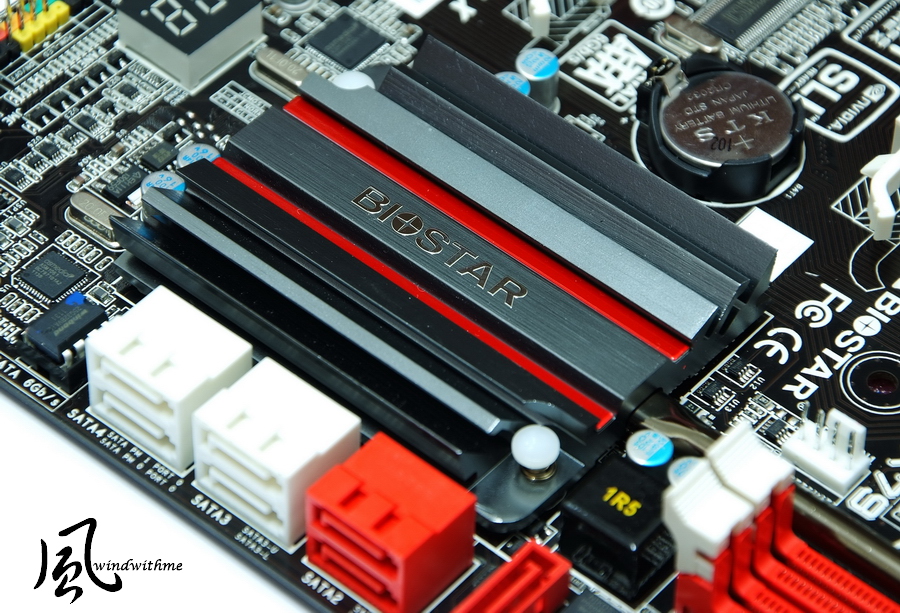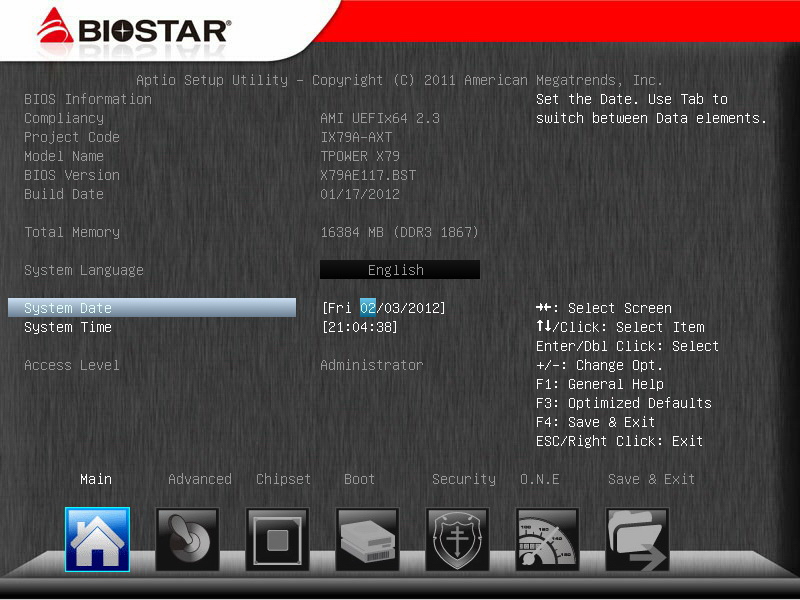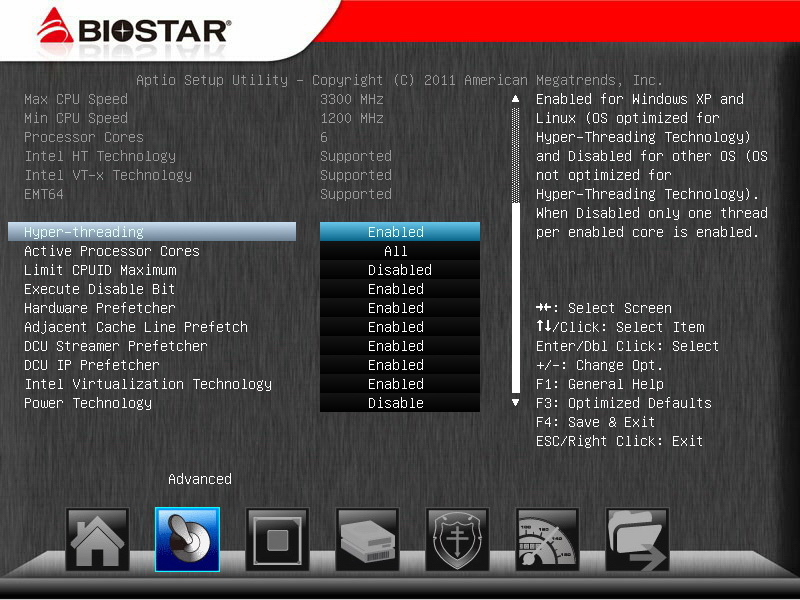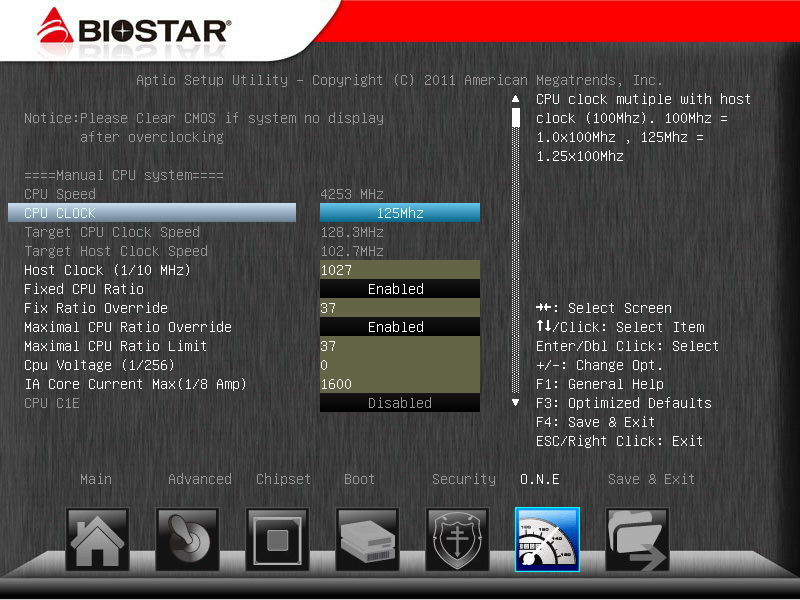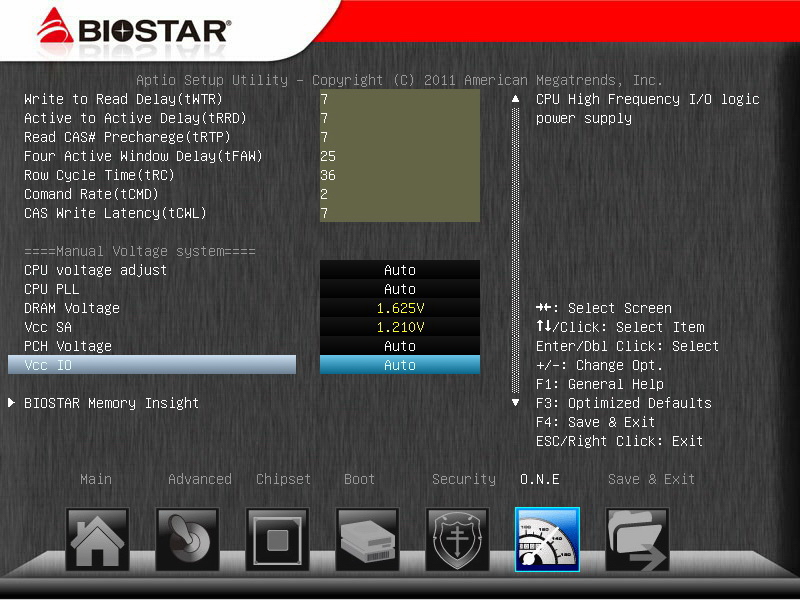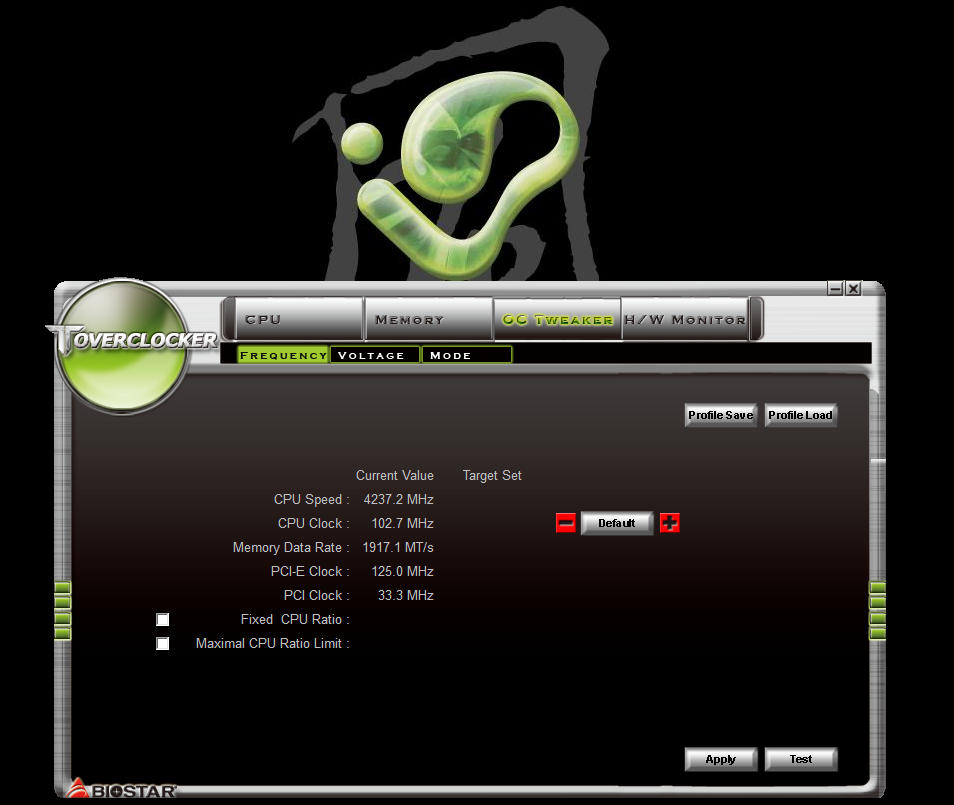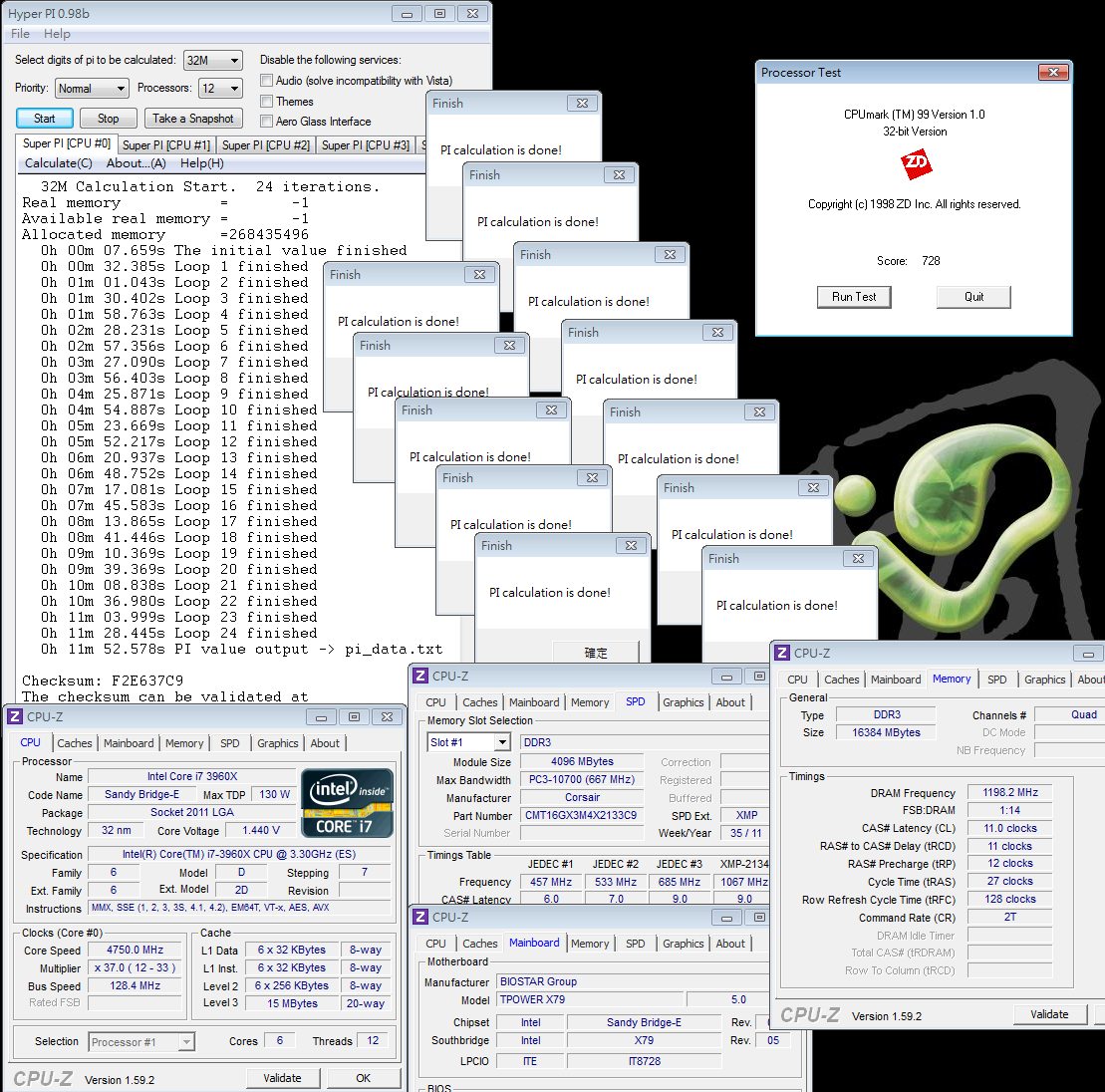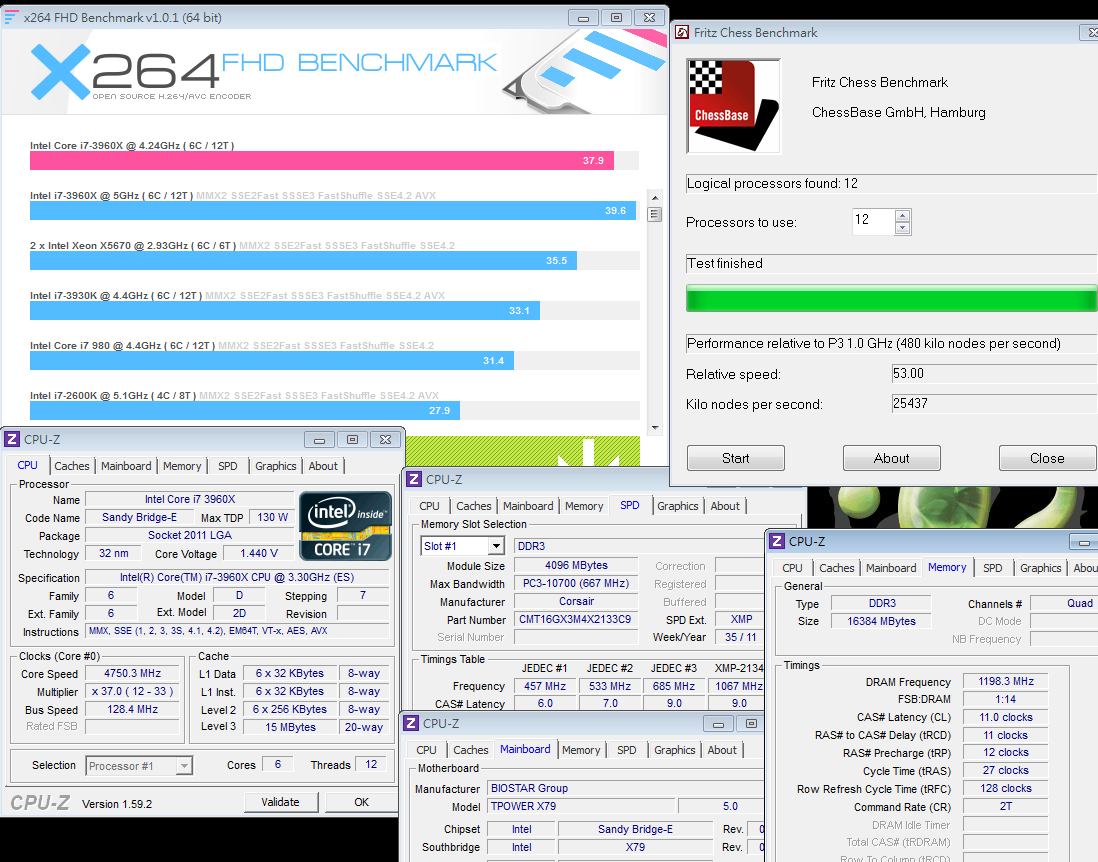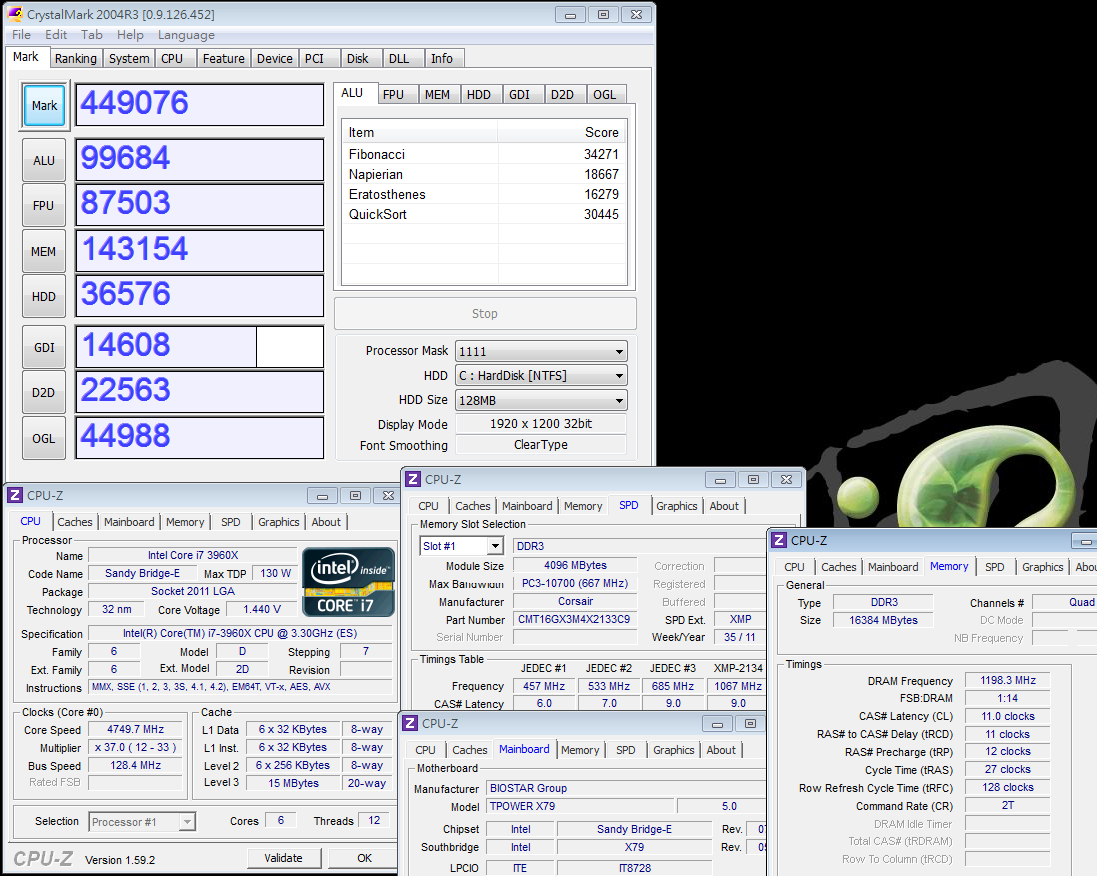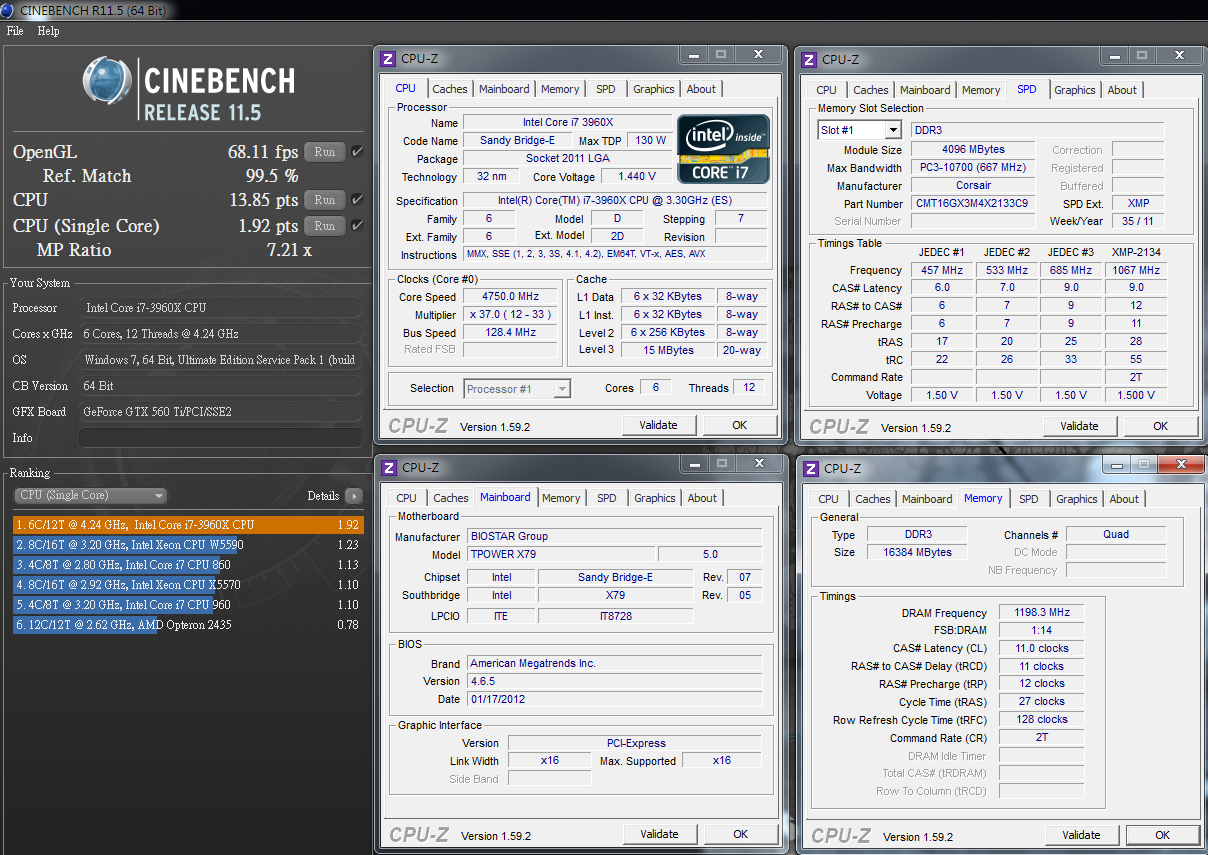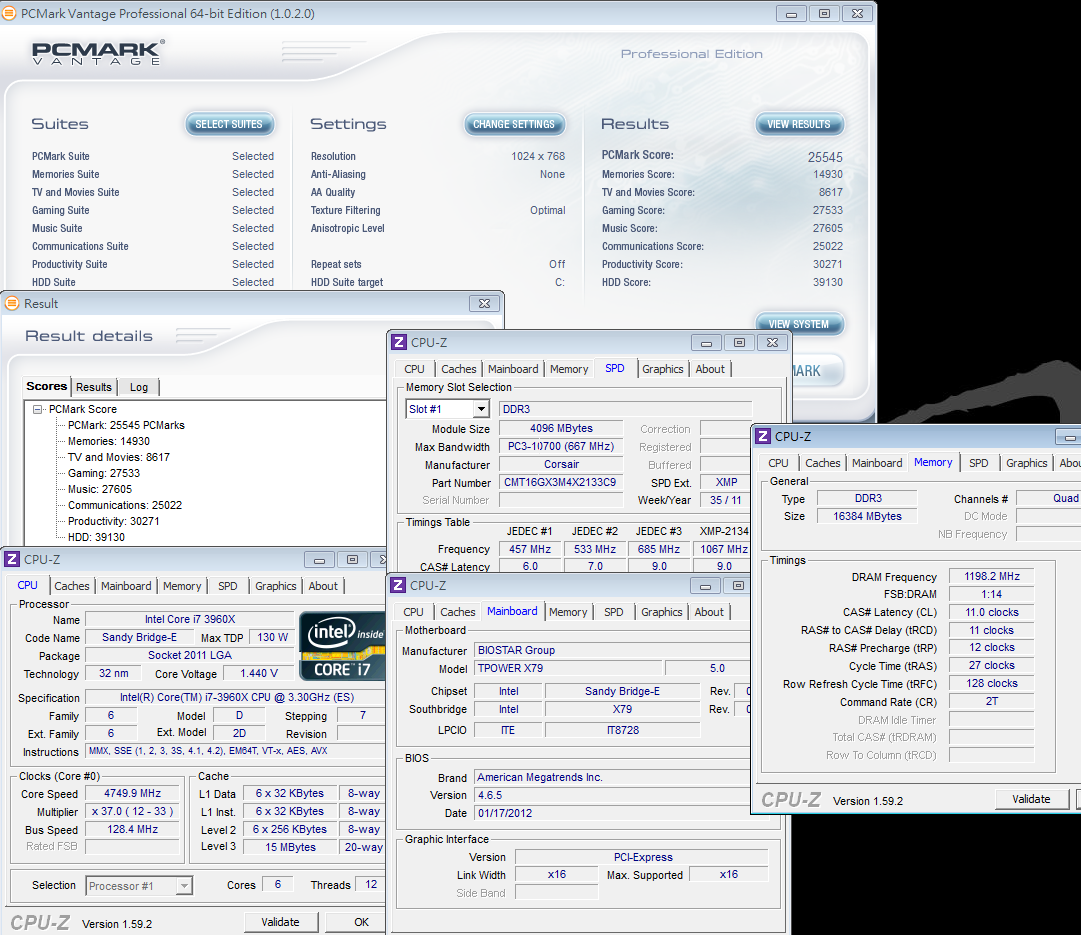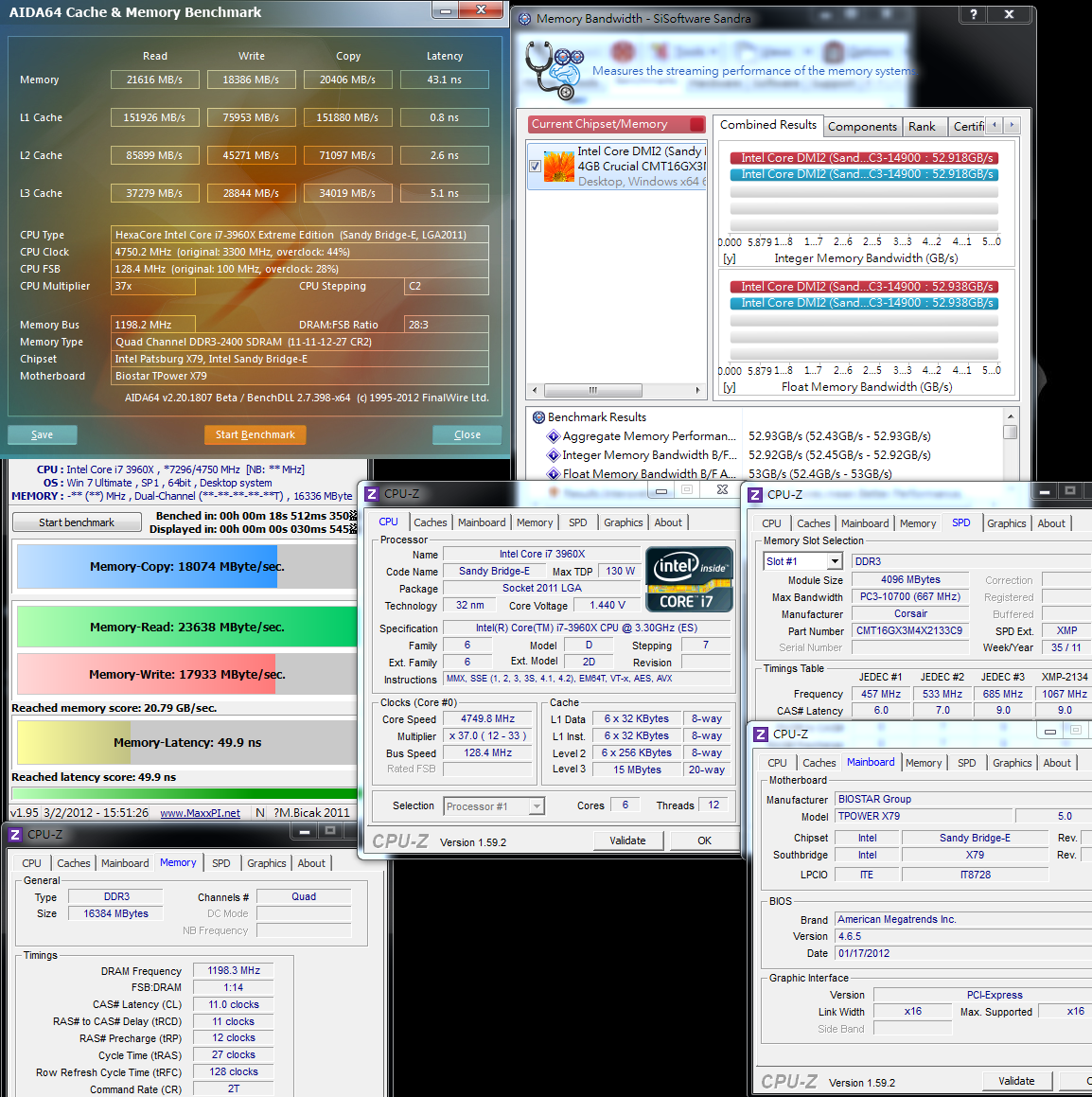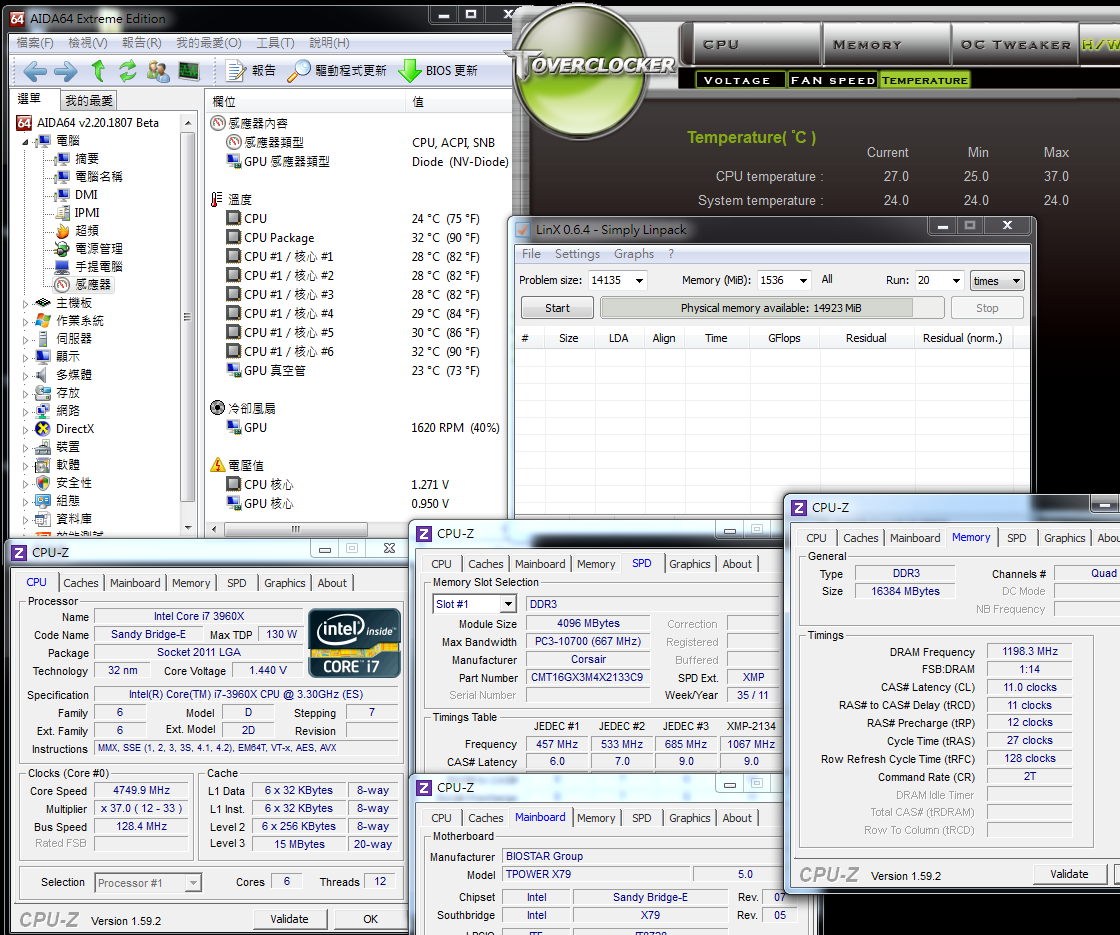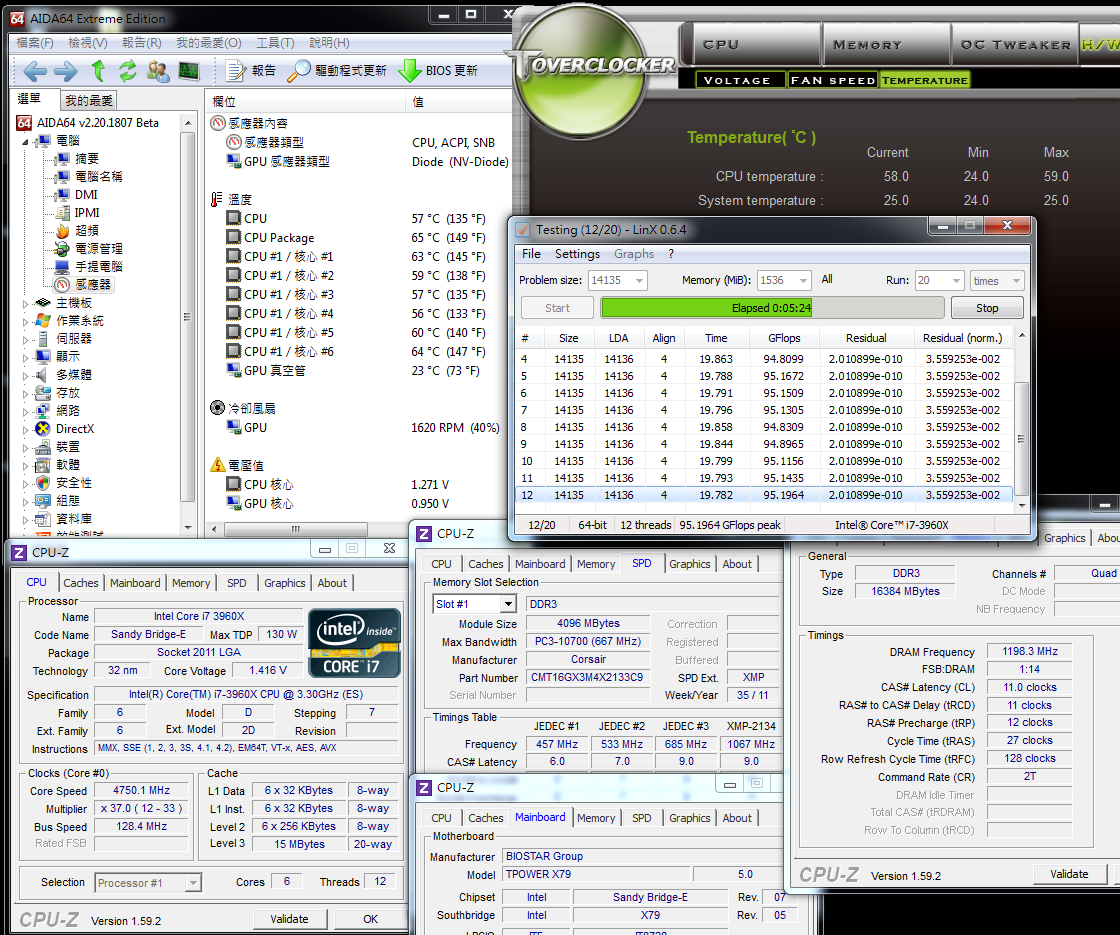It’s been more than three months since Intel Sandy Bridge-E was released last November.
There are three types of CPUs, two 6C12T types, and the affordable 4C8T i7-3820 released lately.
There are a lot of MB brands of Intel X79 chipset on the market.
Among the various MB brands in the market, the X79 is considered as the newest state-of-the-art product.
This time Windwithme is going to share the details about the overclocking experience of the X79 for the fourth time.
The X79 is manufactured by BIOSTAR and it boasts of high-performance overclocking features and an affordable price.
The currently released X79 belongs to the TPower series, and is classified as the technologically advanced product line of BIOSTAR.
First, let’s have a look at the BIOSTAR TPower X79.
It has 8 layers of PCB boards, and its whole body adopts black as the base color and red as the auxiliary color. White is used for the expanded slots.
Based on the common ATX spec, it is 30.5cm X 24.4cm (W X L).
In spite of its fair price, its material and specification can almost be considered as medium-level.
Accessories Included:
Product manual, IO board, SATA wires and CrossFire / SLI network bridge
The lower left section of the motherboard
3 X PCI-E 2.0 X16 supports 3-Way AMD CrossFireX/nVIDIA SLI technology at most, and the bandwidth is X16 + X16 + X8
2 X PCI-E X1
2 X PCI
Network chip: Realtek RTL8111E
Audio chip Realtek ALC892 supports 8-channel Blu-ray Audio and THX TruStudio Pro technology at most
The lower right section of the motherboard
3 X red SATA2 and 2 X white SATA3 connectors are provided by the X79 chipset; it supports RAID 0,RAID 1, RAID 5 and RAID 10.
The maximum performance depends on the installed SATA equipment.
2 X white SATA connectors are provided by the ASM1601 chipset, with the SATA3 specification and AHCI support.
The blue section on the left includes the front USB 3.0 slot, power, reset buttons, and a simple built-in Debug LED
The upper right section of the motherboard
It has a 24-PIN power input and a second 8-PIN power input. The DDR3 adopts a two-phase power supply design.
The CPU power supply design has 9 phases in total, namely, 6 VCORE phases, 1 VSA phase and 2 VCCIO phases.
4 X DIMM DDR3 slots support 800/1066/1333/1600/1866/2000(OC), and the highest DDR3 capacity supported is 32GB.
It supports 4 channels and Extreme Memory Profile technology, and the upper left is the first 8-PIN power input.
IO
1 X PS2 Keyboard
2 X USB 2.0(Black)
1 X S/PDIF Out
6 X USB 3.0(Blue)
1 X eSATA2(Red)
1 X RJ-45 Network hole
6 X Audio holes
The upper side of the audio chip has a metal cover, where the BIOSTAR Logo is printed and which displays a red light when powered on.








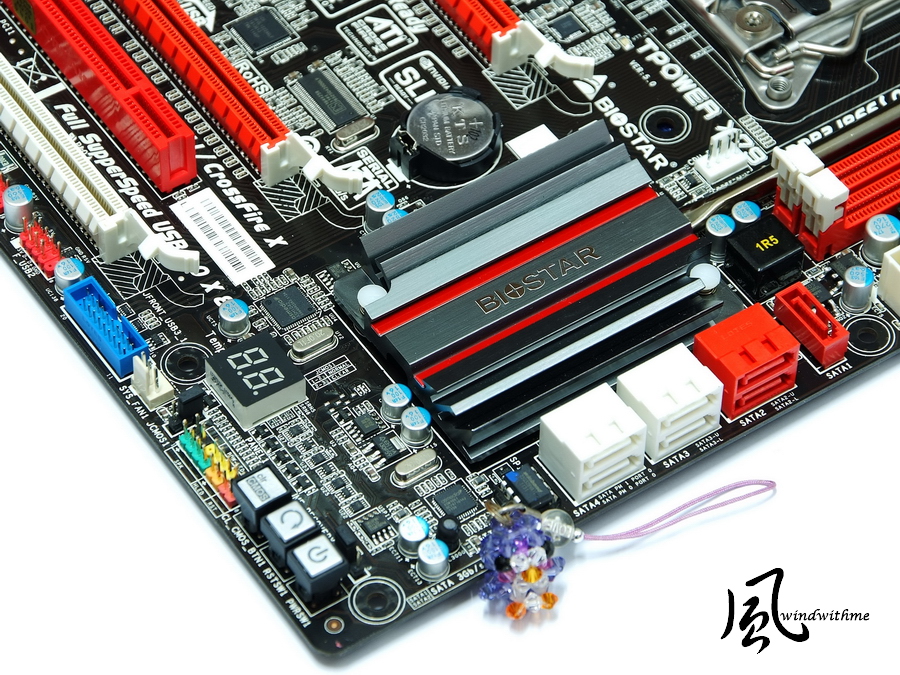


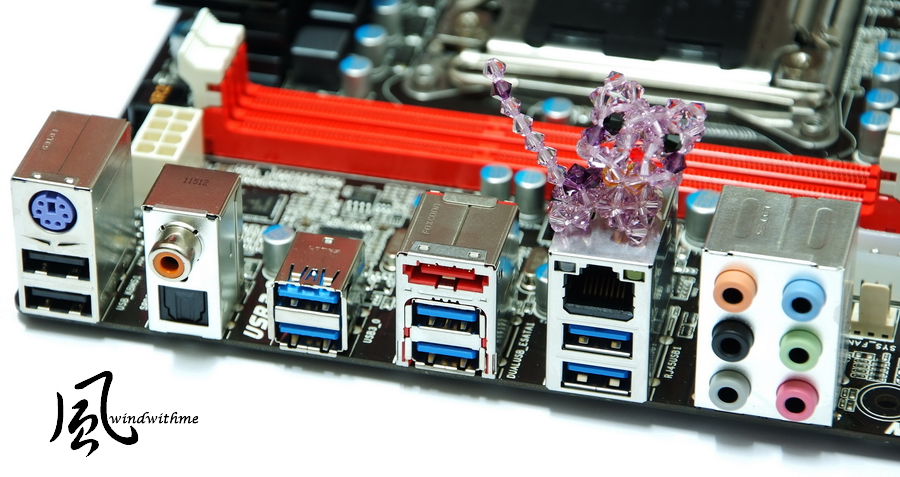

 Rispondi quotando
Rispondi quotando

